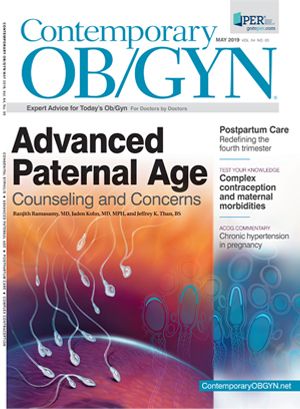Drug for postmenopausal osteoporosis gets nod from FDA
A newly approved drug can significantly reduce the risk of fractures, but it carries a distressing "black box" warning.
©RFBSIP - stock.adobe_.com

Clinical trials of romosozumab, a drug recently approved by the US Food and Drug Administration, showed that it significantly reduced risk of new fractures in postmenopausal women. Clinicians should be aware, however, that the monoclonal antibody (mAb)-marketed as Evenity-carries a “black box” warning about increased risk of heart attack, stroke, and cardiovascular death.
Romosozumab is given in a total dose of 210 mg, administered as two separate subcutaneous injections at the same time. Treatment is once monthly and limited to 12 doses because the anabolic effect of the drug, which blocks the protein sclerostin and increases new bone formation, wanes after that period.
In two clinical trials of more than 11,000 women with postmenopausal osteoporosis, romosozumab was tested against placebo and followed by treatment with denosumab and with alendronate, respectively. In both studies, the mAb significantly reduced risk of fracture.
“Romosozumab represents a new very potent osteoporosis therapeutic option for patients at very high risk of fractures,” said Kenneth G. Saag, MD, principal investigator of one of the two phase 3 clinical trials established the safety and efficacy of the drug. “As is true with all therapies, the benefits much be weighed with the potential risks and decisions should be made incorporating patient preference.”
Women who took the drug for a year in the first trial, published in 2016, had a 73% lower risk of a new vertebral fracture than patients on placebo. That benefit was sustained in the second year of the trial, when patients in both arms were switched to denosumab. In the second trial, published in 2017, 1 year of treatment with romosozumab followed by 1 year of alendronate resulted in a 50% lower risk of new vertebral fracture than 2 years of alendronate alone. In that study the mAb also was found to reduce risk of nonvertebral fractures compared with alendronate alone.
Common side effects of the mAb seen in the two trials were joint pain and headache. Romosozumab increased risk of cardiovascular death, heart attack, and stroke in the second trial but not the first trial. In the 2017 study, serious cardiovascular events were observed in 2.5% of patients on romosozumab versus 1.9% on alendronate. The authors noted that sclerostin is constitutively expressed in the aorta but its function in the vasculature is unknown, and that in some studies but not two meta-analyses, alendronate was associated with a reduction in risk of cardiovascular disease.

USPSTF recommends osteoporosis screening for senior women to prevent fractures
January 20th 2025The US Preventive Services Task Force emphasizes screening for osteoporosis in women aged 65 years and older and at-risk postmenopausal women aged under 65 years, citing moderate benefits in fracture prevention.
Read More
Hysterectomy without adnexal surgical procedure raises osteoporosis risk
December 19th 2023A recent study reveals that hysterectomy without an adnexal surgical procedure increases the risk of osteoporosis among women aged 40 to 59 years, emphasizing the need for informed patient consultation regarding this potential association.
Read More
